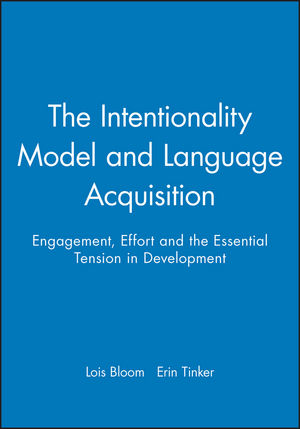The Intentionality Model and Language Acquisition: Engagement, Effort and the Essential Tension in DevelopmentISBN: 978-1-4051-0089-2
Paperback
116 pages
February 2002, Wiley-Blackwell
 |
||||||
The Intentionality Model builds on the child's engagement in a world of persons and objects, the effort that learning language requires, and the essential tension between engagement and effort that propels language acquisition. According to this perspective, children learn language in acts of expression and interpretation; they work at acquiring language; all aspects of a child's development contribute to this process.
- Provides results of a longitudinal study which examined language acquisition in the second year of life in the context of developments in cognition, affect, and social connectedness
- Results of lag sequential analyses are reported to show how different behaviors--words, sentences, emotional expressions, conversational interactions, and construction thematic relations between objects in play--converged, both in the stream of children's actions in everyday events, in real time, an in developmental time between the emergence of words at about 13 months and the transition to simple sentences at about 2 years of age
- The conclusions show that performance counts for explaining language acquisition; language is not acquired independently but in relation to other behaviors; acquiring language is not easy and requires the work of behavioral coordination



